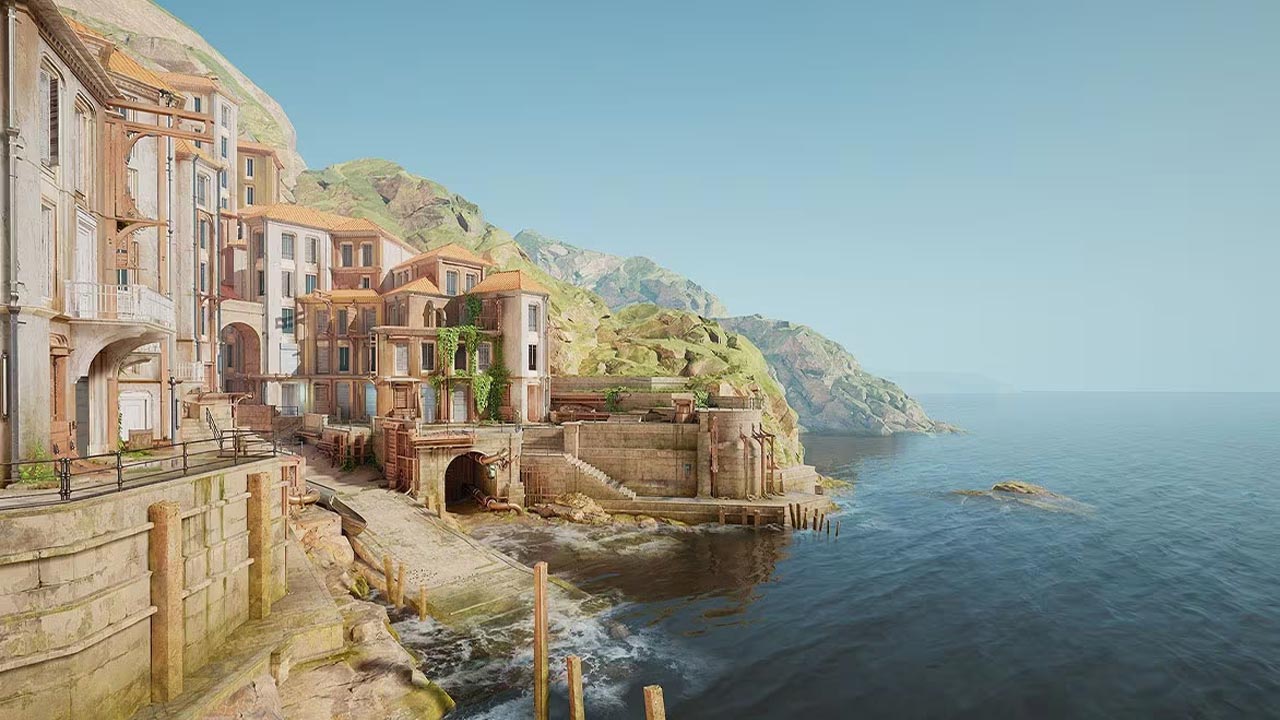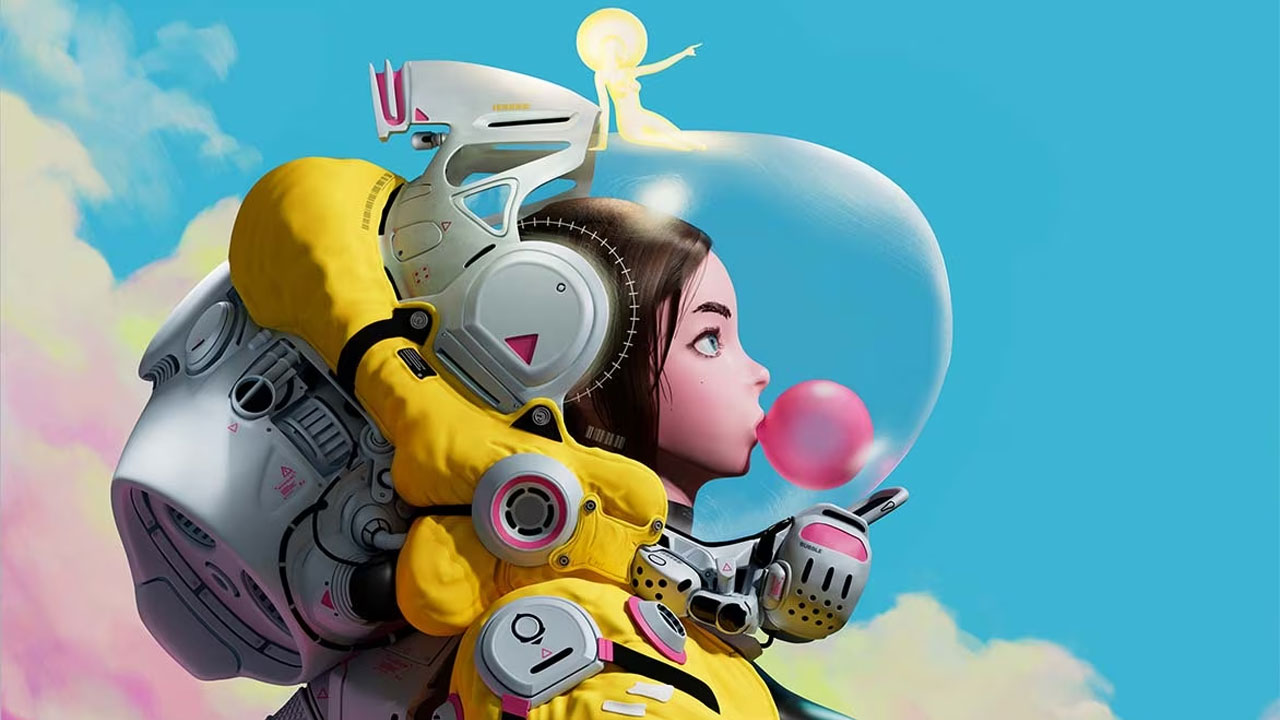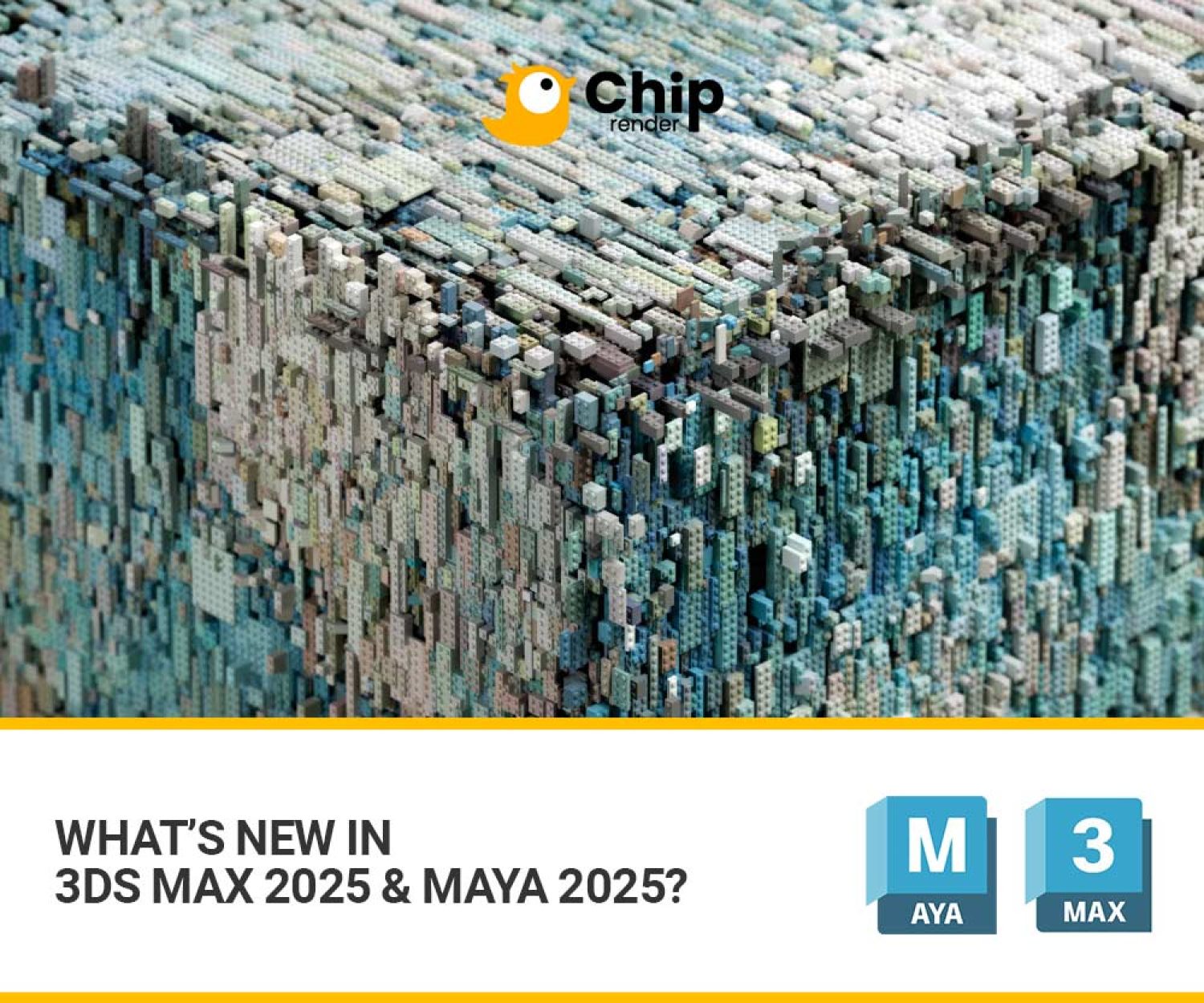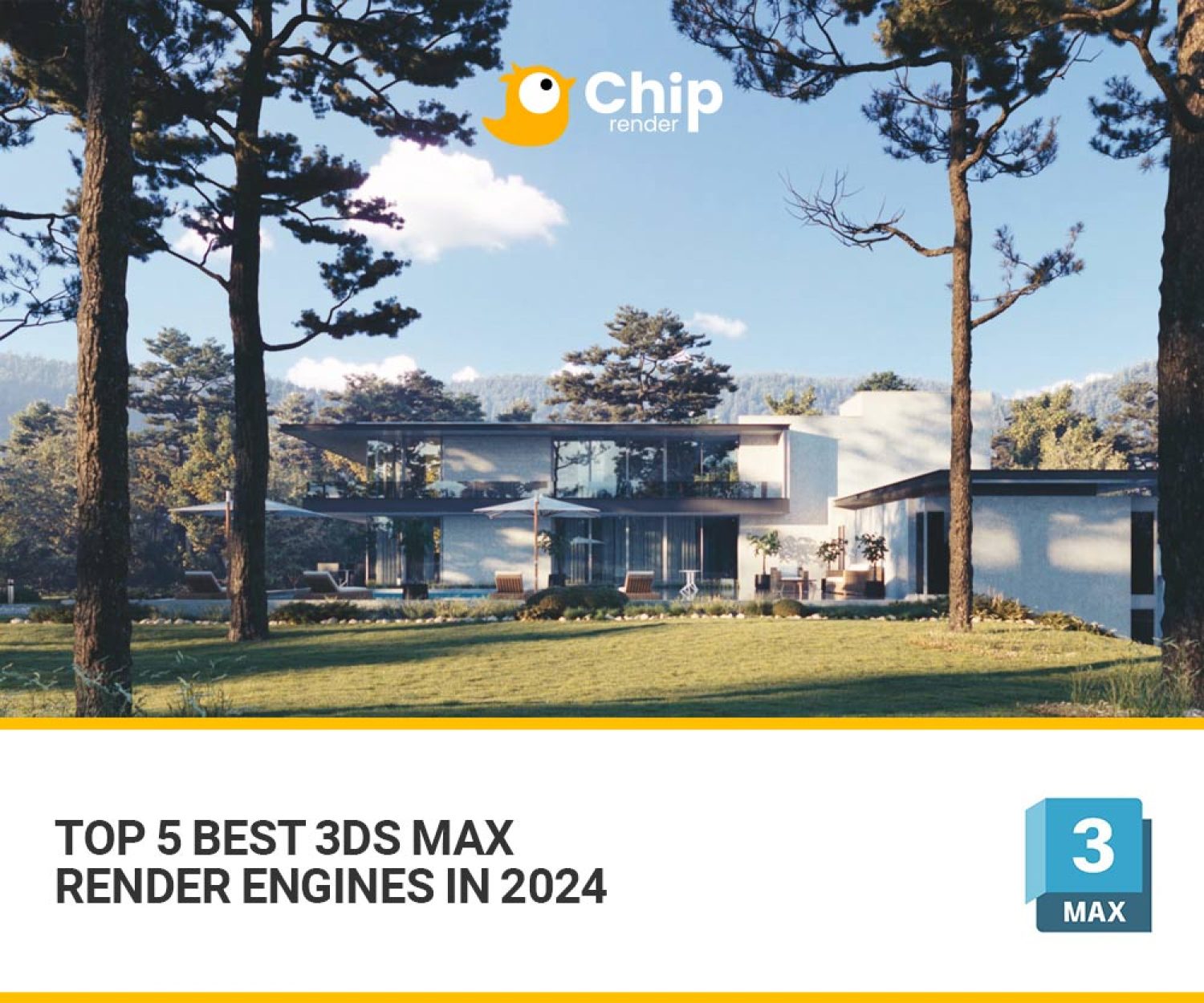Discover 3ds Max vs Maya, which is the right tool for your project.
Autodesk’s 3ds Max and Maya are two leading 3D modeling and animation software solutions with distinct strengths and applications.
Choosing the right software tool is crucial for ensuring the success and efficiency of any project. While both 3ds Max and Maya offer powerful features and capabilities, each excels in certain areas and caters to different workflows and industries.
In this post, Chip Render will compare 3ds Max vs Maya and help you choose the right tool for your project.
3ds Max vs Maya: Why choose 3ds Max?
3ds Max is a professional 3D modeling, animation, and rendering application for gaming and design visualization.

Image via Autodesk 3ds Max
Robust modeling toolset
3ds Max’s modeling toolset allows you to shape and sculpt whatever you can imagine, from complex details on humans and things to jaw-dropping sceneries and worlds.
You may easily create complicated models by using 3ds Max’s strong polygon modeling capabilities. Tools like Smart Extrude provide a simple and versatile approach to shape faces on an object while automatically rebuilding or stitching adjacent faces together. The powerful retopology tools in 3ds Max allow you to design clean 3D topology and produce professional results.
A distinct modifier stack technique enables you to sculpt and modify. Use the Chamfer modifier to create edges, the Relax modifier to modify surface tension, and the Symmetry modifier to do typical modeling work.
Intuitive texturing and shading
With 3ds Max’s sophisticated texture, material, and viewport tools, you now can improve your look development. Support for Substance Maps and Open Shading Language (OSL) enables you to build and apply complex materials that elevate your ideas. At the same time, the Material Editor allows you to add material finishes, modify textures, and use vivid colors to create photorealistic designs.
Bake-to-texture in 3ds Max also offers an optimized, intuitive, and fully scriptable texture baking experience that includes support for Physically Based Rendering (PBR), material input overrides, and OSL workflows.
High-quality rendering
3ds Max allows you to see render previews fast and effectively. This means you can spend more time being creative rather than waiting for time-consuming overnight renders. The 3ds Max viewport also provides render-quality previews, which show physically based rendering (PBR) materials and camera effects directly.
With Arnold as the default renderer, you can see changes to the scene in real time, including lighting, materials, and cameras. Furthermore, with support for Open Shading Language (OSL), you can modify OSL shader text directly in the material editor and view live modifications in the Viewport and ActiveShade, significantly increasing productivity.
3ds Max vs Maya: Why choose Maya?
Maya is an industry-standard 3D animation and visual effects software for movies, television, and video games.

Image credit: Natalie Jerabek, concept art by Wenjuinn Png, via Autodesk
Powerful character creation
Polygon modeling in Maya lets you create 3D models with geometry based on vertices, edges, and faces, whereas NURBS modeling allows you to build characters from geometric primitives and drawn curves. The sculpting toolset of Maya offers an intuitive clay-like process for shaping and molding characters while maintaining complete artistic control.
Maya’s interactive grooming features enable you to make realistic hair and fur for your favorite characters and animals. There is a comprehensive set of tools, including sculpting brushes, modifiers, and sculpting layers, for you to discover and produce all types of hair and fur.
Lifelike animation
Maya has powerful capabilities for speeding up animation and editing. The Time Editor offers a straightforward, clip-based approach for non-linear animation editing. This means you can effortlessly switch between clips and alter timing operations such as speed, length, and start/stop times. Cached Playback allows you to test iterations of your animation in the viewport rather than creating additional playblasts.
Maya allows you to add realistic movement to any scene or character you are working on, with the help of various tools and features. For example, tools for creating high-quality, production-ready characters, an intuitive graph editor for manipulating animation curves and keys, and shape authoring tools for adding fine details like facial expressions.
Incredibly detailed simulations
Bifrost, which focuses on delivering rich, procedural workflows to many parts of your pipeline, contains robust scattering, instancing, volumetric, and FX features.
It allows you to generate rich procedural effects such as smoke, fire, explosions, sand, and snow. Then you simply share them with other artists for usage in various shots, scenarios, and shows. Effects can be seen in the viewport and rendered using Arnold, Maya’s built-in renderer.
3ds Max vs Maya: Ideal Use Cases
When it comes to creating complex characters and dazzling effects, Maya takes the spotlight. With its robust toolset for modeling, shaping, grooming, rigging, and animating, Maya is the go-to choice for bringing intricate characters and dynamic visual effects to life.
On the other hand, if you are looking to build expansive worlds and detailed props, 3ds Max steps up to the plate. Offering an easy-to-use and flexible toolset for modeling, texturing, shading, lighting, and rendering, 3ds Max empowers you to craft immersive environments and intricate props with precision and ease.
Architecture
When it comes to architecture, 3ds Max is a preferred choice over Maya. With 3ds Max, you can seamlessly visualize high-quality architectural renderings and meticulously model detailed props and objects for your projects in a fraction of the time. Its rich and flexible toolset empowers architects and designers to craft premium designs with unparalleled artistic control.
Game Development
Both Maya and 3ds Max stand as pillars in the game development industry, providing a rich array of proven 3D tools tailored to every stage of the process. Maya provides a powerful animation toolset and unparalleled rigging capabilities, allowing artists to infuse 3D characters and creatures with lifelike movements and personalities. Meanwhile, 3ds Max offers strong modeling tools and physically-based rendering, empowering game developers to craft vast and intricate game worlds for players to explore.
Animation
When it comes to animation, Maya stands as a cornerstone with its Academy Award-winning toolset, renowned across the industry for crafting believable characters and their immersive worlds. You will dive into an intuitive and robust toolkit that transforms animation into a seamless creative journey, where every movement becomes an expression of artistic vision rather than a series of button presses.
Wrap up
In summary, 3ds Max is renowned for its robust modeling capabilities and flexible workflow, making it a preferred choice for industries like architecture, interior design, and entertainment. On the other hand, Maya excels at character rigging, animation, and dynamics, making it a must-have tool for animation studios and visual effects artists.
Understanding the software’s strengths can help you optimize your workflow and achieve desired outcomes efficiently.
So, tell us. 3ds Max vs Maya – Which software are you using?
 Chip Render Farm supports 3ds Max and Maya Rendering with its integrated Arnold Renderer and other render engines such as V-Ray, Redshift, OctaneRender, Corona Renderer, and more. Join Chip Render now and cut your render times several times with just a small investment from $2.9. With Chip Render, you have your own Cloud Workstation and leverage 1/2/4 x GPU RTX 3090 servers for rendering 3ds Max and Maya projects.
Chip Render Farm supports 3ds Max and Maya Rendering with its integrated Arnold Renderer and other render engines such as V-Ray, Redshift, OctaneRender, Corona Renderer, and more. Join Chip Render now and cut your render times several times with just a small investment from $2.9. With Chip Render, you have your own Cloud Workstation and leverage 1/2/4 x GPU RTX 3090 servers for rendering 3ds Max and Maya projects.




